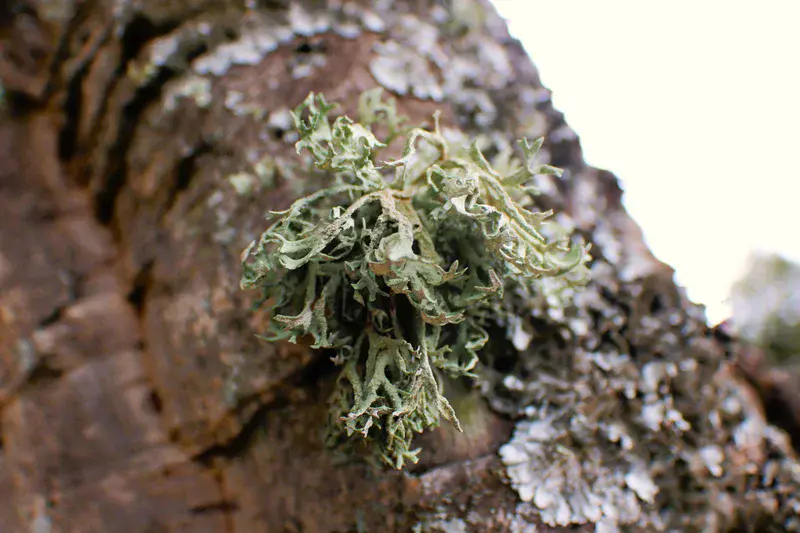
Evernia prunastri: stopping by woods on a cloudy evening
by Antonio Jordán, University of Seville, Sevilla, Spain
First, in English:
Meet Evernia prunastri, a true star of the lichen world! You’ve probably seen it before, hanging from branches like little greenish-grey, branched ribbons. But don’t be fooled by its modest appearance—this lichen leads a surprisingly interesting life. Evernia prunastri isn’t a single organism, but a partnership. It’s a collaboration between a fungus and a photosynthetic partner (usually an alga), working together. The fungus provides the structure and absorbs moisture from the air, while the alga uses sunlight to fix atmospheric CO₂ and produce sugars, which it shares with the fungus.
And here’s the curious part: Evernia has no roots, so it doesn’t take nutrients from the tree it grows on. It simply hangs there, catching whatever the wind and rain bring—dust and nutrients.
When parts of the lichen break off or it dies, all that organic matter falls to the ground. Over time, it decomposes and releases nutrients, like a slow-release natural fertilizer. A quiet little forest hero, working behind the scenes.
Some more information here: https://imaggeo.egu.eu/view/19061/
Ahora, en español:
Te presento a Evernia prunastri, ¡una estrella del mundo de los líquenes! Seguro que lo has visto antes, colgando de las ramas como pequeñas cintas ramificadas de color gris verdoso. Pero no te dejes engañar por su aspecto modesto: este líquen tiene una vida de lo más interesante.
Evernia prunastri no es un solo organismo, sino una pareja. Es la colaboración entre un hongo y una compañera fotosintética (normalmente un alga), trabajando juntos. El hongo proporciona la estructura y absorbe la humedad del aire, mientras que el alga aprovecha la luz solar para fijar CO₂ atmosférico y fabricar azúcares, que cede al hongo.
Y aquí viene lo curioso: Evernia no tiene raíces, así que no toma nutrientes del árbol donde vive. Simplemente se cuelga allí, atrapando lo que le traen el viento y la lluvia: polvo y nutrientes.
Cuando alguna parte del líquen se desprende o muere, toda esa materia orgánica cae al suelo. Con el tiempo, se descompone y libera nutrientes, como un fertilizante natural de liberación lenta. Un pequeño héroe del bosque, trabajando en silencio.
Lee más aquí: https://imaggeo.egu.eu/view/19061/
Categories
Location
- Europe (3893)
- Southern Europe (1691)
- Spain (819)
- Exact location (-5.6136 W, 37.9491 N)
Tags
Colours
Image properties
6000 × 4000 px;
image/jpeg; 3.8 MB
Camera:
Canon EOS 2000D
Taken on 18
April
2025
Submitted on 7 May 2025
Licence
Creative Commons Attribution-ShareAlike 3.0 Unported (CC BY-SA 3.0)
Credit
Antonio Jordán (distributed via imaggeo.egu.eu)
Share
Appreciate
Report